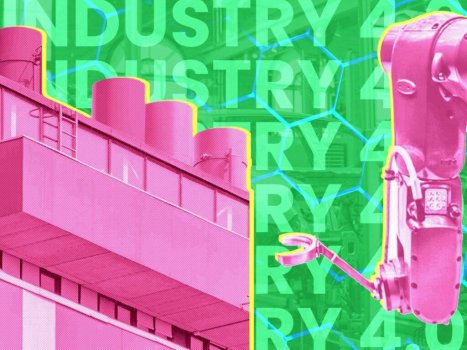K
Kathleen Martin
Guest
Like the previous three revolutions, Industry 4.0 aims to transform manufacturing using the latest technologies. This time around, it is the advanced information and communications tech that creates the Internet of Things. Industry 4.0 combines IoT with AI, ML, and robotics to digitize manufacturing.
IoT is a key part of the Industry 4.0 strategy which works to create flexible and connected digital factories where communication is facilitated between all parts of the system. The best aspect of today’s technologies like IoT, AI, and Big Data is their range of applications. These technologies work on the factory floor as well as in other areas such as planning and management. Manufacturers can even integrate customers and business partners in value and business processes.
As you can see, Industrial IoT (IIoT) has great potential to improve manufacturing. Today, automation and robots are present in almost all factories. The use of AI is also speeding up which has improved automation and manufacturing efficiency. As manufacturers look for ways to embrace IoT and Industry 4.0, the smart manufacturing market is expected to be worth $228.2 billion by 2027. Here are some of the ways the industry is moving towards that goal.
IoT in Manufacturing Automation
Cyber-physical systems (CPS) are at the core of the smart factory that Industry 4.0 envisions. CPS are systems that use sensors and software in all parts of manufacturing. These parts may be machines, vehicles, routes, inventory, and the plant building itself. The sensors record and save the data which is then processed by the computer to make decisions. These decisions directly affect the physical system through actuators and human-machine interfaces (HMIs).
CPS improves upon the automated machines using Industrial IoT. Regular automated machines work in isolation using the software. In contrast, CPS collects and shares data from and with all the assets and areas of the plant. Cloud computing is used to analyze this data to make decisions that optimize the system. Businesses can also use AI and ML for smarter optimization based on previous results.
CPS and IoT complement each other to create smart factories. These competitive factories have reduced downtimes, improved efficiency, create better products, and account for higher productivity. Factories that implement IoT in manufacturing report cost reduction and an improvement in quality.
Continue reading: https://www.iotforall.com/the-role-of-iot-and-industry-4-0-in-creating-digital-factories-of-tomorrow
IoT is a key part of the Industry 4.0 strategy which works to create flexible and connected digital factories where communication is facilitated between all parts of the system. The best aspect of today’s technologies like IoT, AI, and Big Data is their range of applications. These technologies work on the factory floor as well as in other areas such as planning and management. Manufacturers can even integrate customers and business partners in value and business processes.
As you can see, Industrial IoT (IIoT) has great potential to improve manufacturing. Today, automation and robots are present in almost all factories. The use of AI is also speeding up which has improved automation and manufacturing efficiency. As manufacturers look for ways to embrace IoT and Industry 4.0, the smart manufacturing market is expected to be worth $228.2 billion by 2027. Here are some of the ways the industry is moving towards that goal.
IoT in Manufacturing Automation
Cyber-physical systems (CPS) are at the core of the smart factory that Industry 4.0 envisions. CPS are systems that use sensors and software in all parts of manufacturing. These parts may be machines, vehicles, routes, inventory, and the plant building itself. The sensors record and save the data which is then processed by the computer to make decisions. These decisions directly affect the physical system through actuators and human-machine interfaces (HMIs).
CPS improves upon the automated machines using Industrial IoT. Regular automated machines work in isolation using the software. In contrast, CPS collects and shares data from and with all the assets and areas of the plant. Cloud computing is used to analyze this data to make decisions that optimize the system. Businesses can also use AI and ML for smarter optimization based on previous results.
CPS and IoT complement each other to create smart factories. These competitive factories have reduced downtimes, improved efficiency, create better products, and account for higher productivity. Factories that implement IoT in manufacturing report cost reduction and an improvement in quality.
Continue reading: https://www.iotforall.com/the-role-of-iot-and-industry-4-0-in-creating-digital-factories-of-tomorrow

